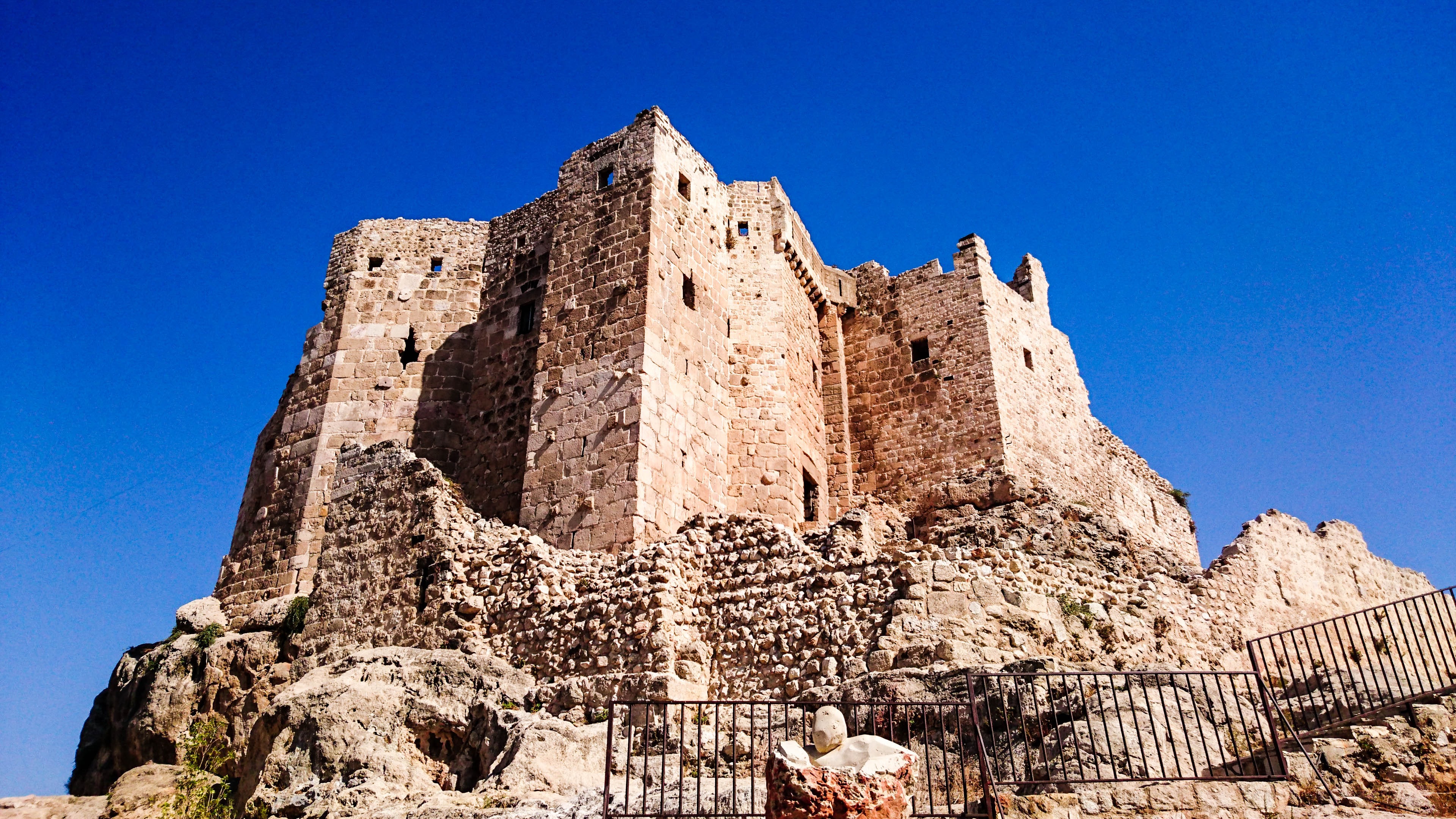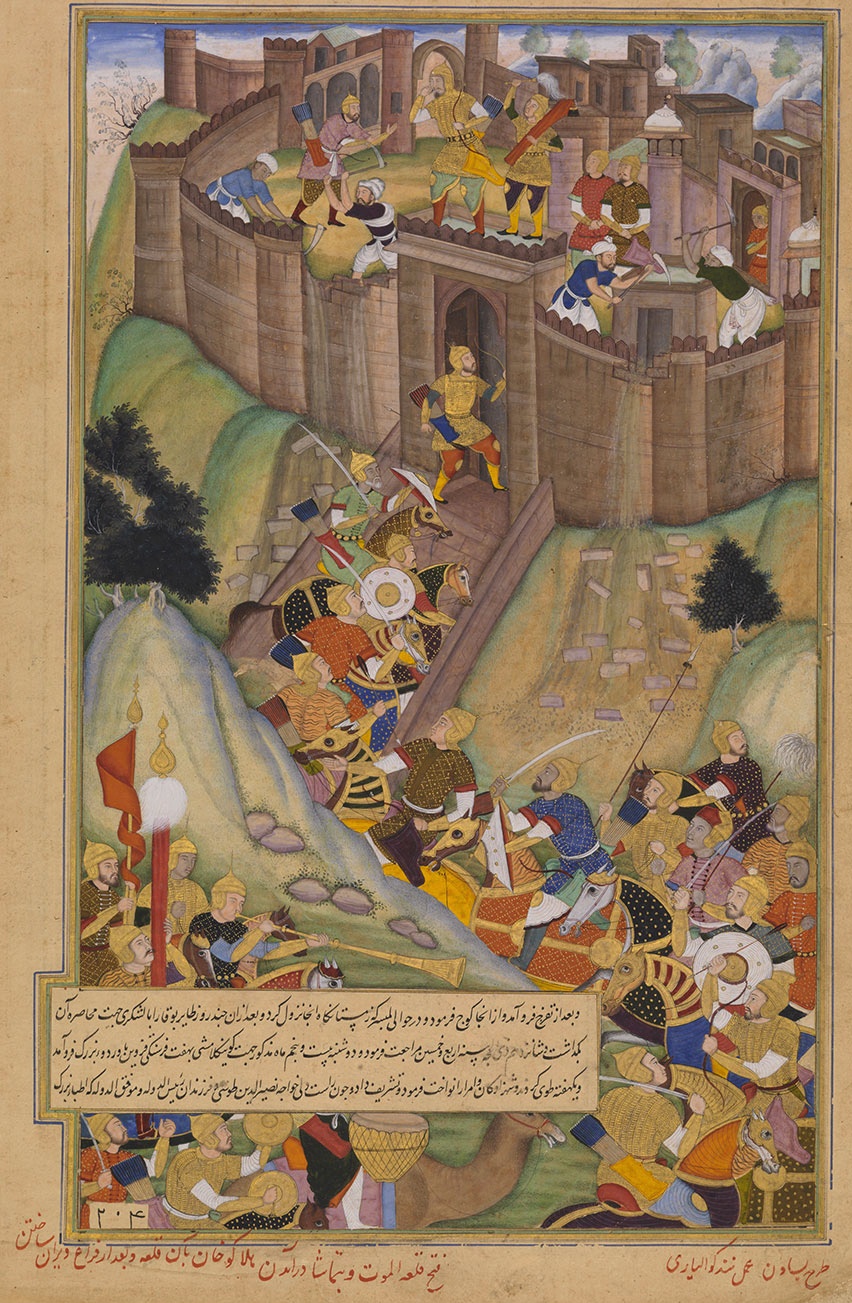|
Hashishim
The Order of Assassins or simply the Assassins ( fa, طظژط´ظ‘ط§ط´غŒظ†, ل¸¤aإ،إ،ؤپإ،ؤ«n, ) were a Nizؤپrؤ« Ismؤپت؟ؤ«lؤ« order and sect of Shؤ«ت؟a Islam that existed between 1090 and 1275 CE. During that time, they lived in the mountains of Persia and in Syria, and held a strict subterfuge policy throughout the Middle East through the covert murder of Muslim and Christian leaders who were considered enemies of the Nizؤپrؤ« Ismؤپت؟ؤ«lؤ« State. The modern term assassination is believed to stem from the tactics used by the Assassins. Nizؤپrؤ« Ismؤپت؟ؤ«lؤ«sm formed in the late 11th century after a succession crisis within the Fatimid Caliphate between Nizؤپr ibn al-Mustanل¹£ir and his half-brother, caliph al-Mustaâ€کlؤ«. Contemporaneous historians include Arabs ibn al-Qalanisi and Ali ibn al-Athir, and the Persian Ata-Malik Juvayni. The first two referred to the Assassins as '' batiniyya'', an epithet widely accepted by Ismؤپت؟ؤ«lؤ«s themselves. Overview The Nizari ... [...More Info...] [...Related Items...] OR: [Wikipedia] [Google] [Baidu] |
Nizari Ismaili State
The Nizari state (the Alamut state) was a Shia Nizari Ismaili state founded by Hassan-i Sabbah after he took control of the Alamut Castle in 1090 AD, which marked the beginning of an era of Ismailism known as the "Alamut period". Their people were also known as the ''Assassins'' or ''Hashashins''. The state consisted of a nexus of strongholds throughout Persia and Syria, with their territories being surrounded by huge swathes of hostile territory. It was formed as a result of a religious and political movement of the minority Nizari sect supported by the anti-Seljuk population. Being heavily outnumbered, the Nizaris resisted adversaries by employing strategic, self-sufficient fortresses and the use of unconventional tactics, notably assassination of important adversaries and psychological warfare. Despite being occupied with survival in their hostile environment, the Ismailis in this period developed a sophisticated outlook and literary tradition. Almost two centuries after ... [...More Info...] [...Related Items...] OR: [Wikipedia] [Google] [Baidu] |
Alamut Castle
Alamut ( fa, wikt:ط§ظ„ظ…ظˆطھ, ط§ظ„ظ…ظˆطھ, meaning "eagle's nest") is a ruined mountain fortress located in the Alamut region in the South Caspian Sea, Caspian province of Qazvin near the Masudabad, Qazvin, Masoudabad region in Iran, approximately 200 km (130 mi) from present-day Tehran. In 1090 AD, the Alamut Castle, a mountain fortress in present-day Iran, came into the possession of Hassan-i Sabbah, a champion of the Nizari Isma'ilism, Nizari Ismaili cause. Until 1256, Alamut functioned as the headquarters of the Nizari Ismaili state, which included a series of List_of_Ismaili_strongholds, strategic strongholds scattered throughout Persia and Syria, with each stronghold being surrounded by swathes of hostile territory. Alamut, which is the most famous of these strongholds, was thought impregnable to any military attack and was fabled for its heavenly gardens, library, and laboratories where philosophers, scientists, and theologians could debate in intellectual freedom. ... [...More Info...] [...Related Items...] OR: [Wikipedia] [Google] [Baidu] |
Middle East
The Middle East ( ar, ط§ظ„ط´ط±ظ‚ ط§ظ„ط£ظˆط³ط·, ISO 233: ) is a geopolitical region commonly encompassing Arabian Peninsula, Arabia (including the Arabian Peninsula and Bahrain), Anatolia, Asia Minor (Asian part of Turkey except Hatay Province), East Thrace (European part of Turkey), Egypt, Iran, the Levant (including Syria (region), Ash-Shؤپm and Cyprus), Mesopotamia (modern-day Iraq), and the Socotra Governorate, Socotra Archipelago (a part of Yemen). The term came into widespread usage as a replacement of the term Near East (as opposed to the Far East) beginning in the early 20th century. The term "Middle East" has led to some confusion over its changing definitions, and has been viewed by some to be discriminatory or too Eurocentrism, Eurocentric. The region includes the vast majority of the territories included in the closely associated definition of Western Asia (including Iran), but without the South Caucasus, and additionally includes all of Egypt (not just the Sina ... [...More Info...] [...Related Items...] OR: [Wikipedia] [Google] [Baidu] |
Al-Kahf Castle
Al-Kahf Castle or Castle of the Cave ( ar, ظ‚ظ„ط¹ط© ط§ظ„ظƒظ‡ظپ) is a medieval Nizari Isma'ili castle located around southeast of Margat, in the al-Ansariyah mountains in northwest Syria. History The castle was built around 1120 by Saif al-Mulk ibn Amrun, and was sold to the Isma'ilis 1138 by his son Musa. It served as the base of the Chief Da'i of Syria Abu Muhammad. Rashid ad-Din Sinan, the leader of the Isma'ili sect in Syria, used this castle initially as his base and hermitage. Sinan eventually died and was buried there in 1193. In 1197 the Regent of Jerusalem, Henry II, Count of Champagne, visited the castle to secure an alliance with Sinan's successor. The castle was the last Isma'ili stronghold in Syria to surrender to the Mamluks. Sultan Baibars finally captured it in 1273, and it remained in use until Ottoman times, when it served at times as a prison for important personages. The castle was finally destroyed in 1816 by Mustafa Agha Barbar, the Ottoman governor of Tr ... [...More Info...] [...Related Items...] OR: [Wikipedia] [Google] [Baidu] |
Al-Qadmus
Al-Qadmus ( ar, ط§ظ„ظ‚ط¯ظ…ظˆط³, also spelled al-Qadmous or Cadmus) is a town in northwestern Syria, administratively part of the Tartus Governorate, located northeast of Tartus and southeast of Baniyas. Nearby localities include Kaff al-Jaa and Masyaf to the east, Wadi al-'Uyun and al-Shaykh Badr to the south, Hammam Wasel, al-Qamsiyah and Maten al-Sahel to the southwest, Taanita to the west, al-Annazeh to the northwest and Deir Mama to the northeast. It is situated just east of the Mediterranean coast and its ruined castle stands on a plateau roughly above sea level and just above the town. According to the Syria Central Bureau of Statistics, al-Qadmus had a population of 5,551 in the 2004 census. It is the administrative center of the al-Qadmus ''nahiyah'' ("sub-district") which contained 25 localities with a collective population of 22,370 in 2004. [...More Info...] [...Related Items...] OR: [Wikipedia] [Google] [Baidu] |
Abu Qubays, Syria
Abu Qubays ( ar, ط£ط¨ظˆ ظ‚ط¨ظٹط³ also spelled ''Abu Qobeis'', ''Abu Qubais'' or ''Bu Kubais''; also known as Qartal) is a former medieval castle and currently an inhabited village in northwestern Syria, administratively part of the Hama Governorate, located northwest of Hama. It is situated in the al-Ghab plain, west of the Orontes River. Nearby localities include Daliyah 21 kilometers to the west, al-Laqbah to the south, Deir Shamil to the southeast, Tell Salhab to the northeast and Nahr al-Bared further northeast. According to the Syria Central Bureau of Statistics (CBS), Abu Qubays had a population of 758 in the 2004 census.General Census of Population and Housing 2004 [...More Info...] [...Related Items...] OR: [Wikipedia] [Google] [Baidu] |
List Of Ismaili Castles
List of the strongholds or dar al-hijra of the Nizari Ismaili state in Persia (Iran) and Syria. Most of the Persian Ismaili castles were in the Alborz mountains, in the regions of Daylaman (particularly, in Alamut and Rudbar; north of modern-day Qazvin) and Quhistan (south of Khurasan), as well as in Qumis. Most of the Syrian Ismaili castles were in Jabal Bahra' (Syrian Coastal Mountain Range). According to Juzjani, before the Mongol invasion the Nizaris possessed 70 forts in Quhistan and 35 in Alamut. Overall, they probably had 250 castles. The Ismaili fortresses in Rudbar of Alamut had been built on rocky heights and were equipped to withstand long sieges; they had storehouses with high capacities and elaborate water supply infrastructure such as cisterns, qanats, and canals. Persia Syria The strongholds in Jabal Bahra' were known as the "Castles of the ''da'wa''" ( ''qilؤپت؟ al-daت؟wah''). See also *Nizari Ismaili state *History of Nizari Ismailism *List of castl ... [...More Info...] [...Related Items...] OR: [Wikipedia] [Google] [Baidu] |
Lambsar Castle
Lambsar ( fa, ظ„ظ…ط¨ط³ط±, also pronounced Lamsar), Lamasar, Lambasar, Lambesar () or Lomasar () was probably the largest and the most fortified of the Ismaili castles. The fortress is located in the central Alburz mountains, south of the Caspian Sea, about 120 km from present-day Tehran, Iran. Lambsar is to the northeast of Razmian village (the central district of Roodbar e Shahrestan). Kiya Buzurg Ummid (died 1138) captured the castle from Rasamuj and rebuilt it into a major stronghold using local labour. He was appointed by Hassan-i Sabbah (died 1124) as its governor. Only ruins remain of this magnificent fortress today. Very deep valleys surrounding the fortress make it impossible to access from the East and West sides. The North and South fronts are the only possible ways to get into the fortress. Although the slope of the mountain with a difference of 150m on both levels is stretched from north to south with a length of 480m, the castle is more than 190m in width. T ... [...More Info...] [...Related Items...] OR: [Wikipedia] [Google] [Baidu] |
Batiniyya
Batiniyya ( ar, ط¨ط§ط·ظ†ظٹط©, Bؤپل¹iniyyah) refers to groups that distinguish between an outer, exoteric ('' zؤپhir'') and an inner, esoteric ('' bؤپل¹in'') meaning in Islamic scriptures. The term has been used in particular for an allegoristic type of scriptural interpretation developed among some Shia groups, stressing the ''bؤپل¹in'' meaning of texts. It has been retained by all branches of Isma'ilism and various Druze groups as well. The Alawites practice a similar system of interpretation. ''Batiniyya'' is a common epithet used to designate Isma'ili Islam, which has been accepted by Ismai'lis themselves. Sunni writers have used the term ''batiniyya'' polemically in reference to rejection of the evident meaning of scripture in favor of its ''bؤپل¹in'' meaning. Al-Ghazali, a medieval Sunni theologian, used the term ''batiniyya'' pejoratively for the adherents of Isma'ilism. Some Shia writers have also used the term polemically. See also * Batin (Islam) * Esoteric interpreta ... [...More Info...] [...Related Items...] OR: [Wikipedia] [Google] [Baidu] |
Ata-Malik Juvayni
Atأ¢-Malek Juvayni (1226–1283) ( fa, ط¹ط·ط§ظ…ظ„ع© ط¬ظˆغŒظ†غŒ), in full, Ala al-Din Ata-ullah (), was a Persian historian and an official of the Mongol state who wrote an account of the Mongol Empire entitled '' Tarؤ«kh-i Jahؤپn-gushؤپ'' (''History of the World Conqueror''). Early life Juvayni was born in Joveyn, a city in Khorasan in eastern Persia. Both his grandfather and his father, Baha al-Din, had held the post of ''sahib-divan'' or Minister of Finance for Muhammad Jalal al-Din and أ–gedei Khan respectively. Baha al-Din also acted as deputy c. 1246 for his immediate superior, the emir Arghun, in which role he oversaw a large area including Kingdom of Georgia. Career Juvayni, just as his predecessors became an important state official. He visited the Mongol capital of Karakorum twice, beginning his history of the Mongols conquests on one such visit (c. 1252–53). He was with Ilkhan Hulagu in the 1256 campaign at the taking of Alamut, where he selected many 'choice ... [...More Info...] [...Related Items...] OR: [Wikipedia] [Google] [Baidu] |





